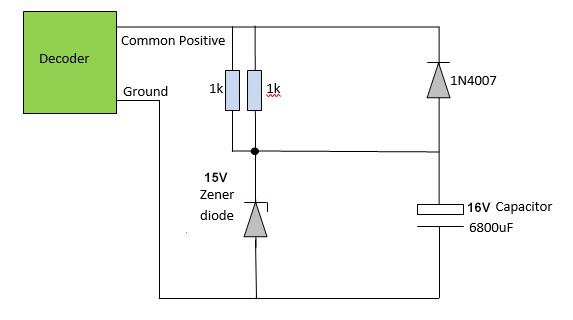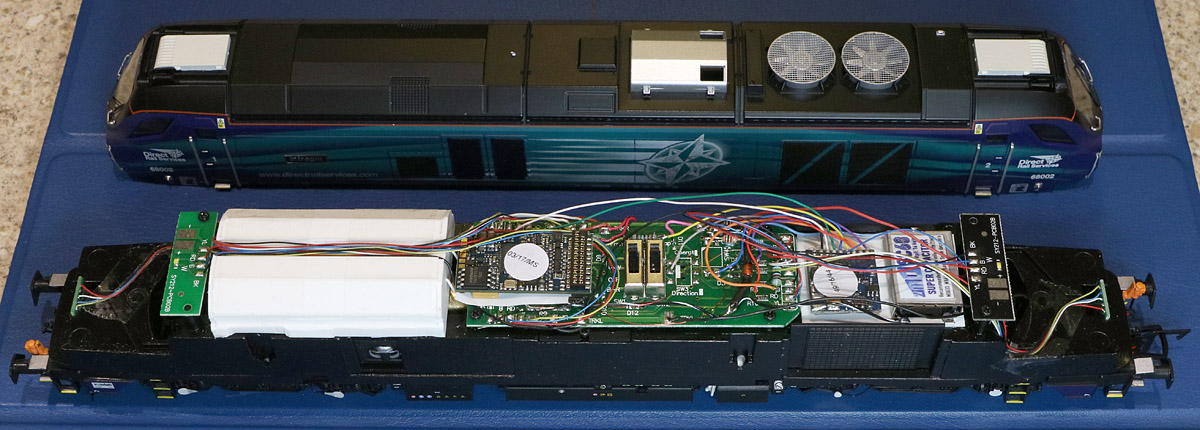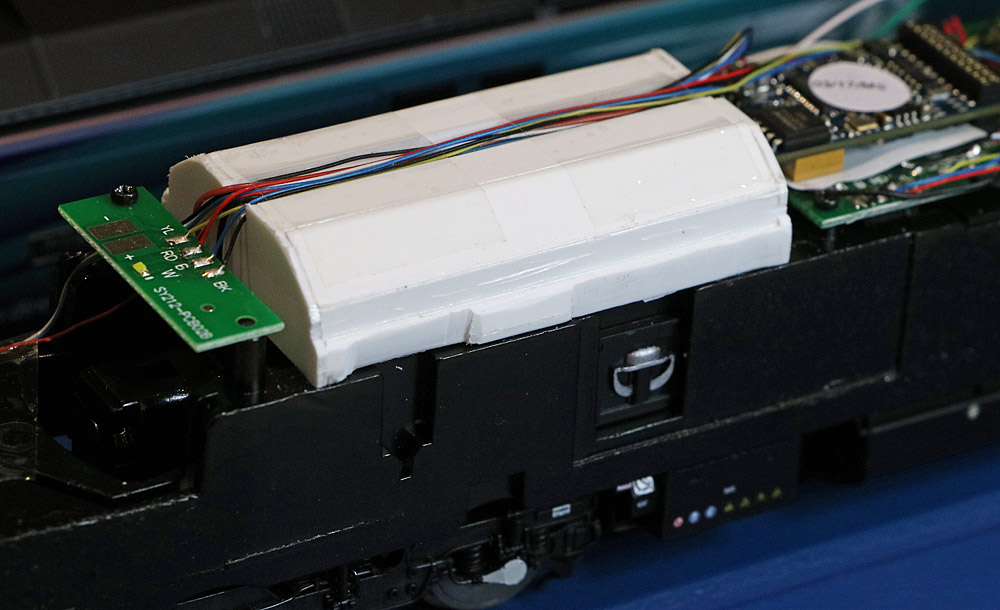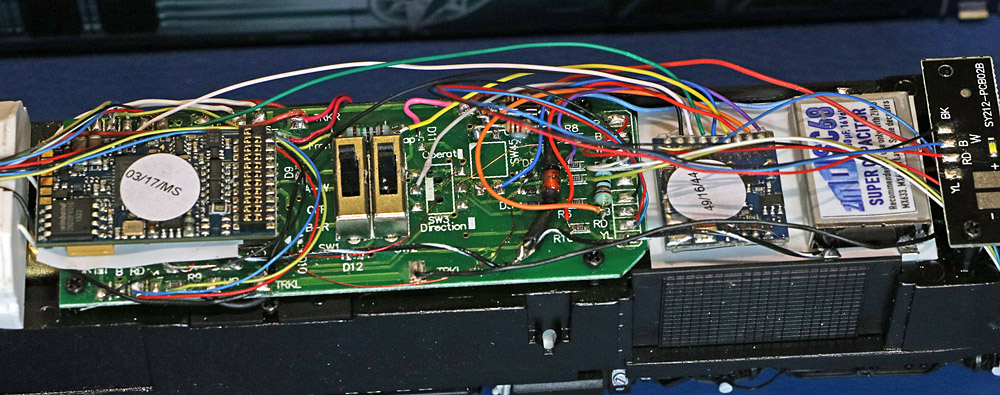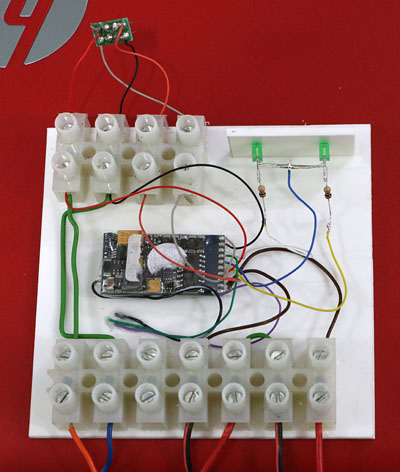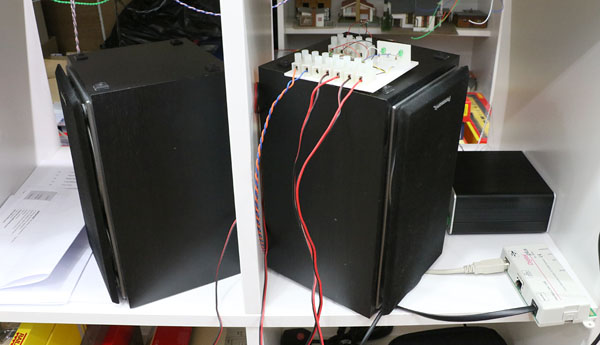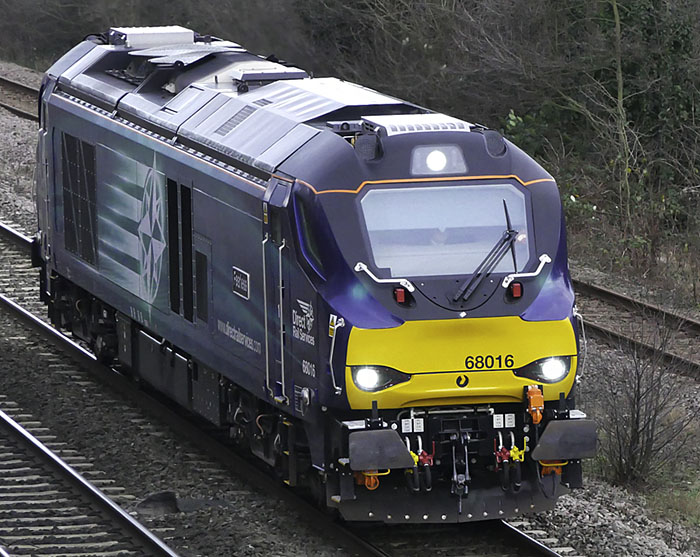
Thanks to Kevin for providing his photo of 68016
Work has begun on the first loco:
|
Configuration: The speaker space is limited (without a lot of milling). Standard 4 ohm bass reflex speakers seem to be unobtainable at present, so in the absence of Bif & Charlie's EM1, I've constructed a custom enclosure that just about fills the available body space, with a centrally mounted ESU 50334 20x40mm drive unit pointing downwards. Sound decoder is Bif's LokSound V4. (Not aware of other options at this stage, and it has the useful drivelock feature). When he gets back from the Scotland show, I'll request a reblow for the unit I've installed I want to include yard mode and main/dipped beam on the headlights. To keep it simple I've installed an additional LokPilot FX function decoder. There is evidence of some last minute changes made to Dapol's main PCB, with a pair of unknown devices that both involve sky-hooked wires to the decoder ground pin. See below for more thoughts on this. |
|
An apparent conflict in the DCC instructions that come with the locomotive: Amongst the recommended decoders are 21 pin MTC ESU LokSound V4 and Zimo MX644D. The LokSound V4 21 pin decoder is available with either low current logic outputs for AUX 3 & 4 (ESU type 54499) or with full performance Aux 3 & 4 outputs as the slightly more expensive M4 type 64499. However the Zimo MX644D is only available with full performance Aux3 & 4 outputs (Although the still available MX644C does have Aux3 & 4 logic outputs). My initial assumption was that the Dapol model must be configured assuming full performance Aux3 & 4 outputs, to enable either decoder type to be used. However there is some sky-hooked afterthought circuitry added to the main PCB, which looks very much like a pair of buffer MOSFETs connected to the Aux 3 and 4 outputs. If this is the case, then only the original ESU LokSound V4 type 54499 will work. The buffers act as inverters, which would reverse the sense of a full performance Aux 3 and 4 output, making the Zimo MX 644D (or M4 version of the LokSound) produce different results from those intended by Dapol. This issue won't cause me any problems as I don't intend to use the Dapol decoder control circuitry. Instead I will design my own minor hardware mods to add additional main or dipped beam headlight functionality. A bit of an own goal for the Dapol documentation! |
|
DC Testing: The locomotives both run smoothly in DC configuration, straight out of the box. So I don't anticipate any running problems when under DCC decoder control. |

